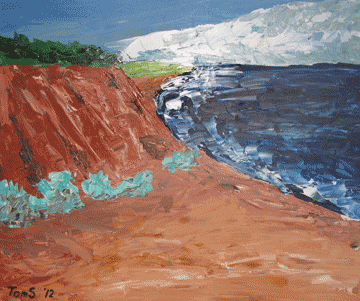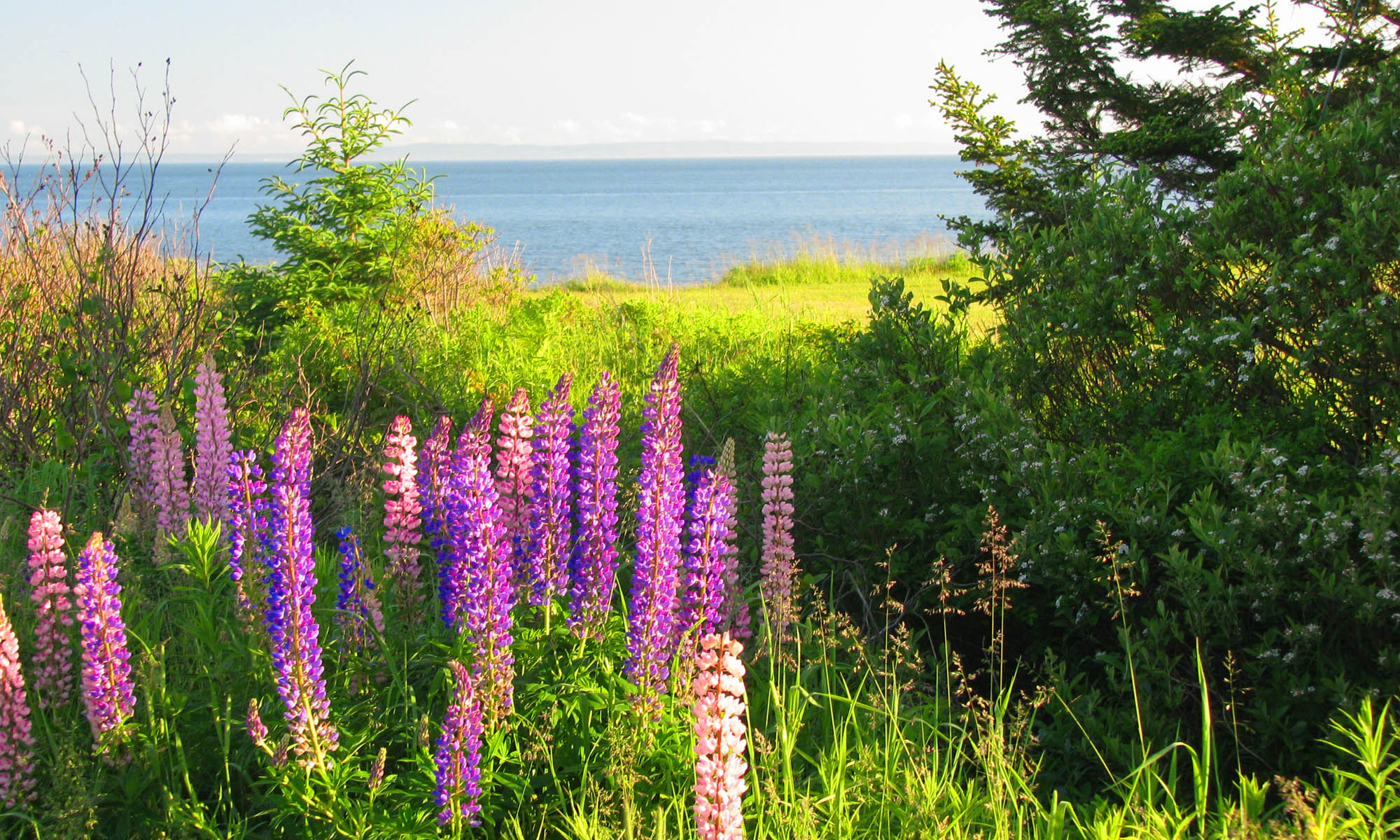With my published books being ousted from the Artisans on Main Gallery, and my photo prints priced so low (when compared to the surrounding matted reproductions of paintings), it is clear that the majority favor the laborious one-of-a-kind works. There is, of course, the famous quote from Groucho Marx:
I sent the club a wire stating, “PLEASE ACCEPT MY RESIGNATION. I DON’T WANT TO BELONG TO ANY CLUB THAT WILL ACCEPT PEOPLE LIKE ME AS A MEMBER”.

Still, if you can’t beat ’em, join ’em…I have decided to see if the artisans group will accept me as a member. In the next week or two…I aim to submit a set of acrylics to be ‘juried’. I decided a couple weeks ago to use up all my resources in hardboard/panel-board and set out to paint 18 pictures all at once…all in thick acrylic and all done entirely with palette knife in an impressionistic style. I first laid out two 4′ x 8′ sheets of plywood on sawhorses in the garage (the truck has been outside for about a week and is probably getting irritated an being ousted), laid out all my ‘canvasses’, and went at it…all at the same time in a round-robin, production mode. For specific inspiration I grabbed some of my postcards and photo-magnets. First I put down a layer of white acrylic as a primer and then went around laying down a single range of colors at a time…first blues, grays, and whites to represent the impression of skies and clouds…then greens and yellows for grass and trees…then reds, browns and whites for beaches and fields…and finally whatever was left–purples and pinks for lupines and grey-greens for beach plants (dusty miller?). It was more fun than finger-painting back in 1st grade!
There are marvelous effects that can be achieved with wet into wet, and thick acrylic remains workable for at least an hour, along with drying overnight. Thick oil paintings used to take weeks to dry–I had to take them home carefully, laid face up in the trunk to avoid smearing. The biggest expense with this new venture has been replenishing tubes of acrylics—especially the heavily-used titanium white…doing thick painting over some 60 square feet of panel put a huge drain on my supply (I have haunted Michael’s in Charlottetown as being the cheapest…if you play the coupons game…immediate source of paints). If this succeeds, I will look into mail-order supplies.
As a final step in the I-can-do-it-faster-and-cheaper exercise, I decided to manufacture my own frames from my own trees. Since last Fall I’ve had a stack of rough-sawn larch (here called juniper) boards stacked in the garage and they have easily dried to the requisite 15% moisture level, so I cut 4 or 5 boards into 2″ wide strips, ran them through a thickness planer, and then cleaned up the edges with the jointer. At that point I calculated all the lengths I would need, added 2″ for the bevels, and cut all the frame pieces, carefully excising any large knots or other flawed areas. I notched all 72 pieces to get a rear inset for the paintings with the router. That’s when things got difficult…I envisioned nice curved patterns on the face of the frames but the router just couldn’t handle the big cuts in one pass…the tool would come loose and ride up, messing up the piece. In the end I set the jointer for 45 degrees and faced all the pieces with a simple bevel. Some other time I will explore frame-making in more detail. Then I glued all the pieces together, carefully matching similar profile pieces, using a single set of 4 picture-frame clamps. brads, and glue. Finally I primed and painted all the frames white, to be later painted with individual colours (with the readily-available acrylic paint set) depending on what goes with the particular picture. In some cases there is a slight discrepancy between the painting size and the frame size, but being on hardboard, it is a simple matter to saw off a little of the painting to fit!…a bit like cropping a photograph. For the final finish I expect to add hanging wires and a brown-paper back cover (to hide my sloppy routing in places). Finally, I’m told buyers like a bio on the back, so here it is:
Tom Schultz
While he apparently stood out for his ability with pastels in 5th grade, he did his first oil painting from a re-purposed paint-by-number set. A birthday present of an ‘oil painting set’ led him to create his first paintings of the back-yard woods on canvas board. In college he took a one-credit independent study class on drawing with pencil and he did some recreational oil painting including an outdoor one where he had to afterward dig the black flies out of the paint and several large oils done with palette knife. Taking several classes with his wife in the ‘90s, he was exposed to watercolour and pen-and-ink media. Coming to PEI about 2000, he discovered his oil paints had all dried up and switched to acrylic. He has since taken local classes in watercolour and acrylic media and taught one class in Community School. This present series of paintings all rely entirely on palette knife and thickly-applied acrylic paint, with a goal of creating an impressionistic view of Prince Edward Island scenery. www.woodislandsprints.com/ July 2012
I haven’t totaled up my time and materials yet, but if I can sell all the paintings…and I mean actually sell them as in gone from the gallery…in the $75 to $200 range I will have been highly successful. Crass commercialism if I really believed they would sell.
I compare this with works of a fine artist…and a nice person…working in the gallery who estimates a return of about $1.50 per hour if his highly-detailed, super-realistic, Andrew-Wyeth-like paintings sell…this is someone who puts the grass on with a 3-hair brush! I was encouraged to hear it is done primarily for relaxation. I applaud that individual…not a mercenary drop of blood there.
